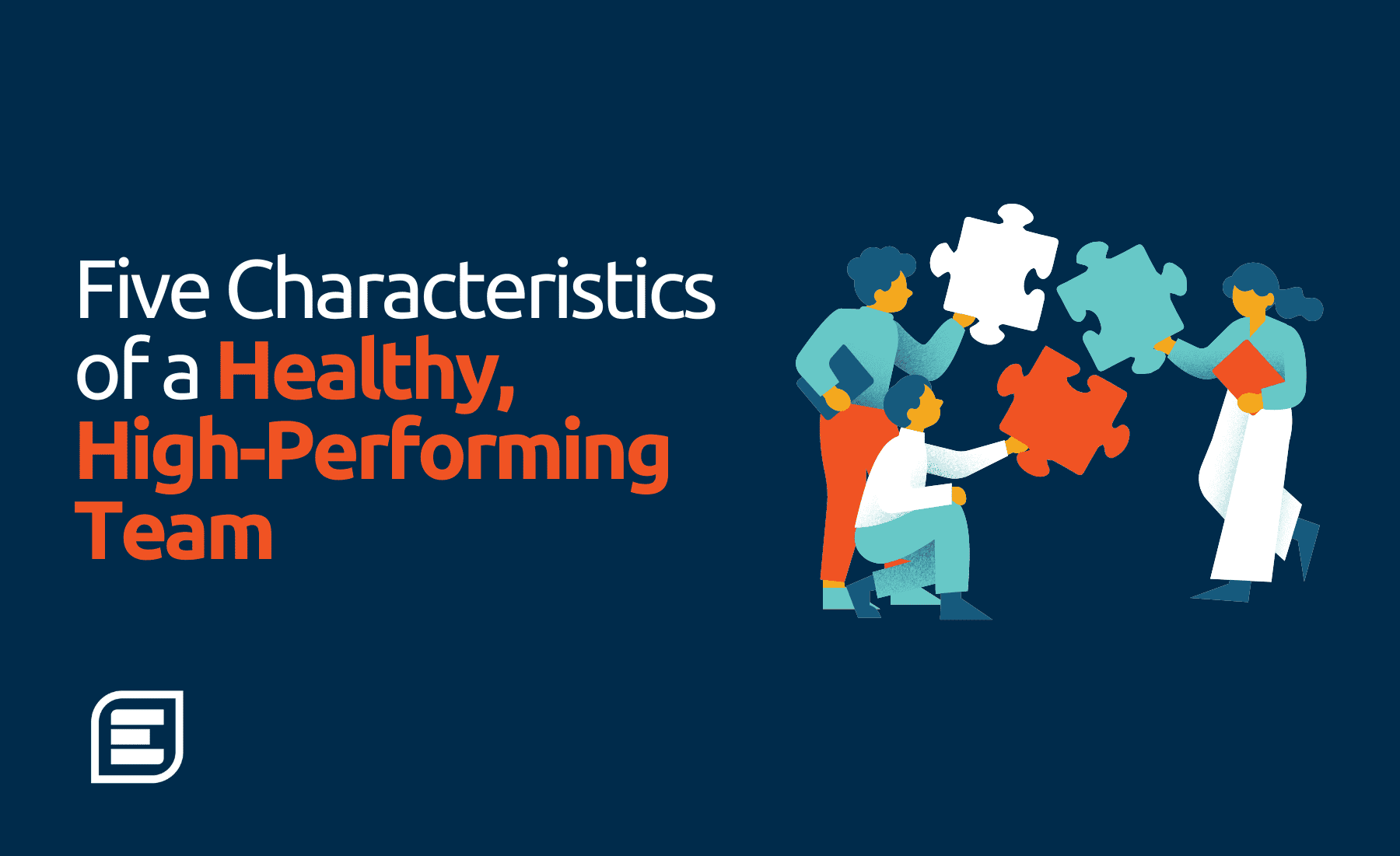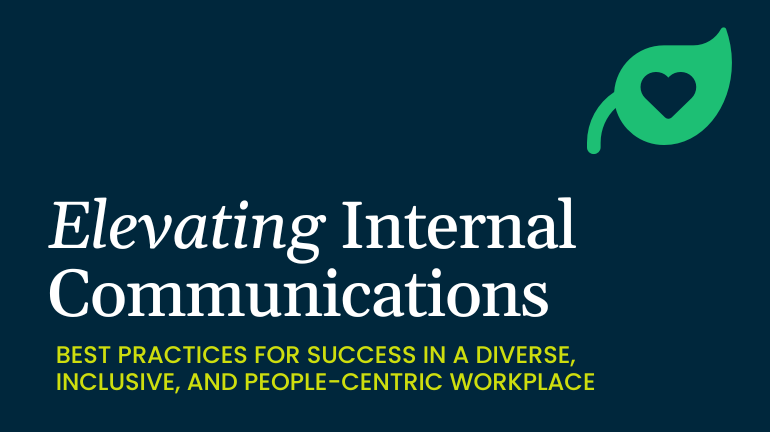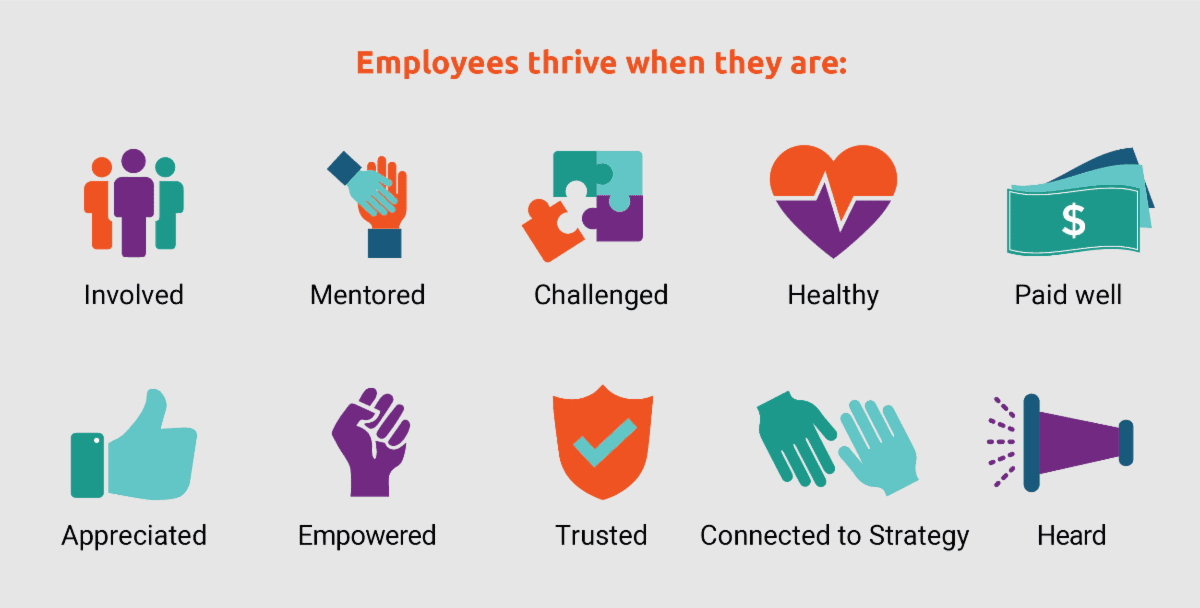The Five Must-Have Characteristics of a Healthy, High-Performing Team

A happy life means a healthy life, and the workplace is no exception. Numerous researchers have studied the Happy Productive Worker Hypothesis, which states that the happier an individual is, the better they perform (Cropanzano & Wright, 2001). One study found that happy people were 12% more productive than their unhappy counterparts (Oswald et al., 2015). If there is a link between human well-being and productivity, then this concept should also be true at the team level. A healthy team is a more productive team, leading to a more productive organization. So, how do you cultivate a healthy team?
According to Evans Consulting, a healthy, high-performing team has five key characteristics: alignment with a set of values, empowerment through shared accountability, collaboration that creates a culture of inclusion and trust, resulting in team well-being and resilience. So, how do these principles manifest in the workplace? Read below for some actual examples of each component of a healthy team and some “quick wins” you can implement today to foster each of these principles:
Trust and Well-Being
You feel secure and confident working with your team or even taking risks. You feel heard when expressing your thoughts, feelings, and values. This sense of trust motivates you to go the extra mile for your team and the success of your project.
Cultivating Trust and Well-Being: Trust and well-being are present when culture, communication, and processes consistently reflect assurances made to support work-life integration. Team members must feel they can prioritize their health and well-being and maintain a healthy work-life integration. A high-trust culture helps empower individuals to feel this way and perform at their best. In turn, team members will feel an innate sense of responsibility for the team’s and organization’s success.
QUICK WIN Building Trust and Well-Being: Hold a check-in meeting at the end of the week and avoid discussing work whenever possible.
Resilience
Change is coming, making you feel uneasy. However, with a foundation of trust, you feel secure enough to put aside fear and proactively start working on the issue at hand. You have tools to begin solutioning any situation that may arise.
Cultivating Resilience: Resilience is present when a team can adapt in response to a rapid or unexpected change while continuing to function at a high level. A resilient team manages conflict respectfully and productively and is flexible and willing to handle expected and unexpected change. A resilient team is a team with a growth mindset.
QUICK WIN Building Resilience: Get in the habit of setting aside time to conduct debrief sessions where you can discuss what went well, what could be changed, and overall lessons learned.
Empowerment
Junior level staff or those new to a project feel as though they have something to offer and can make an impact. You, too, feel important and eager for the next opportunity to deliver.
Cultivating Empowerment: Empowerment is present when individuals, regardless of rank, can influence meaningful opportunities to impact the success of the team. Essential components of an empowered team are distributed leadership, governance, accountability, and clearly defined roles and responsibilities. All employees need to be afforded authority and opportunity in decision-making, be intrinsically motivated, and be accountable to self-imposed governance.
QUICK WIN Building Empowerment:Rotate ownership of team meetings. Allow team members to set the agenda, facilitate the discussion, and influence the outcomes.
Collaboration
You practice active listening during collaboration sessions because you believe everyone has something valuable to offer and you can learn from them. You build on each other’s ideas instead of convincing the group of your solution.
Cultivating Collaboration: Collaboration occurs when information sharing, idea generation, and knowledge transfer among team members are consistent and easy, even when there are no problems to solve. An inclusive social infrastructure gives team members a sense of belonging to the group, which promotes communication and innovation.
QUICK WIN Building Collaboration:For large projects, discuss who the lead is, who the advisors are, who the contributors are, and who needs to be informed.
Alignment
You are excited to pursue a new project with your team because there is a clear team roadmap that everyone believes in. Everyone understands the purpose of their work and how they will contribute to it.
Cultivating Alignment: Alignment occurs when healthy teams share a collective understanding of the strategy and believe in the team’s values, mission, and vision. Team members are encouraged through recognition.
QUICK WIN Building Alignment:As a team, identify your overall goals and objectives. Discuss how each team member’s work aligns with your overall goals.
Using the Healthy Teams Tool for Team Growth and Development
A healthy, high-performing team is essential for success in any organization. The Evans Healthy Teams Tool can help you assess and improve your team’s overall health by providing actionable data, resources, and suggested activities tailored to your team’s needs. This versatile tool can be used as a stand-alone session or integrated into a larger initiative, such as a leadership development program.
The assessment takes 10 minutes, and you immediately receive a diagnostic breakdown of your team’s health and recommended quick wins for free. Following the assessment, you will gain access to a learning library that helps you address health gaps and provides resources to guide conversations on why healthy teams matter. The resources include suggested activities and research you can use with your team for meaningful development and growth. The Healthy Teams Tool offers the following benefits:
- Actionable data for individual leaders or teams
- Opportunity for approachable discussion around the five component areas
- Diagnosis of areas for improvement
- Versatility – suitable for stand-alone session or as the foundation for larger initiatives
- Access to a library of resources
- Ability to pair with other concepts
Evans Consulting has successfully used the Healthy Teams Tool with clients and teams in various settings:
- Team Assessment and Development: Use this tool with a team from the same organization to diagnose issues and areas for improvement in team dynamics and performance efficiency. The assessment serves as the foundation for one-off or ongoing team-building activities with a purpose! In this approach, you can use the tool to examine and contrast team dynamics and facilitate in-depth discussions around the five components and how they are reflected in your organization. From there, you can have follow-up sessions on areas of improvement or focus on the area of greatest need.
- Leadership Development Program: Use this tool as an exercise as part of a more extensive leadership development program for leaders within one organization or for a group of leaders across multiple organizations. The tool works well as part of a leadership retreat or offsite. In this scenario, you could use the assessment as a standalone session using collective brainstorming and facilitated discussion to compare practices and identify ways to improve each competency of the Healthy Team. The assessment content and results could also be paired with skill development on another topic, such as psychological safety or team culture.
If you are interested in learning more about how to facilitate your teams’ development and growth using the Healthy Teams Tool or have any questions, reach out to healthyteams@evansconsulting.com. Happy healthy team building!
References:
Cropanzano, R. & Wright T. (2001). When a “Happy” worker is really a “productive” worker: A review and Further Refinement of the Happy-Productive Worker Thesis. Consulting Psychology Journal Practice and Research, 53(3): 182-199.
Oswald, A. J., Proto, E., & Sgroi, D. (2015). Happiness and productivity. Journal of Labor Economics, 33(4), 789-822.






